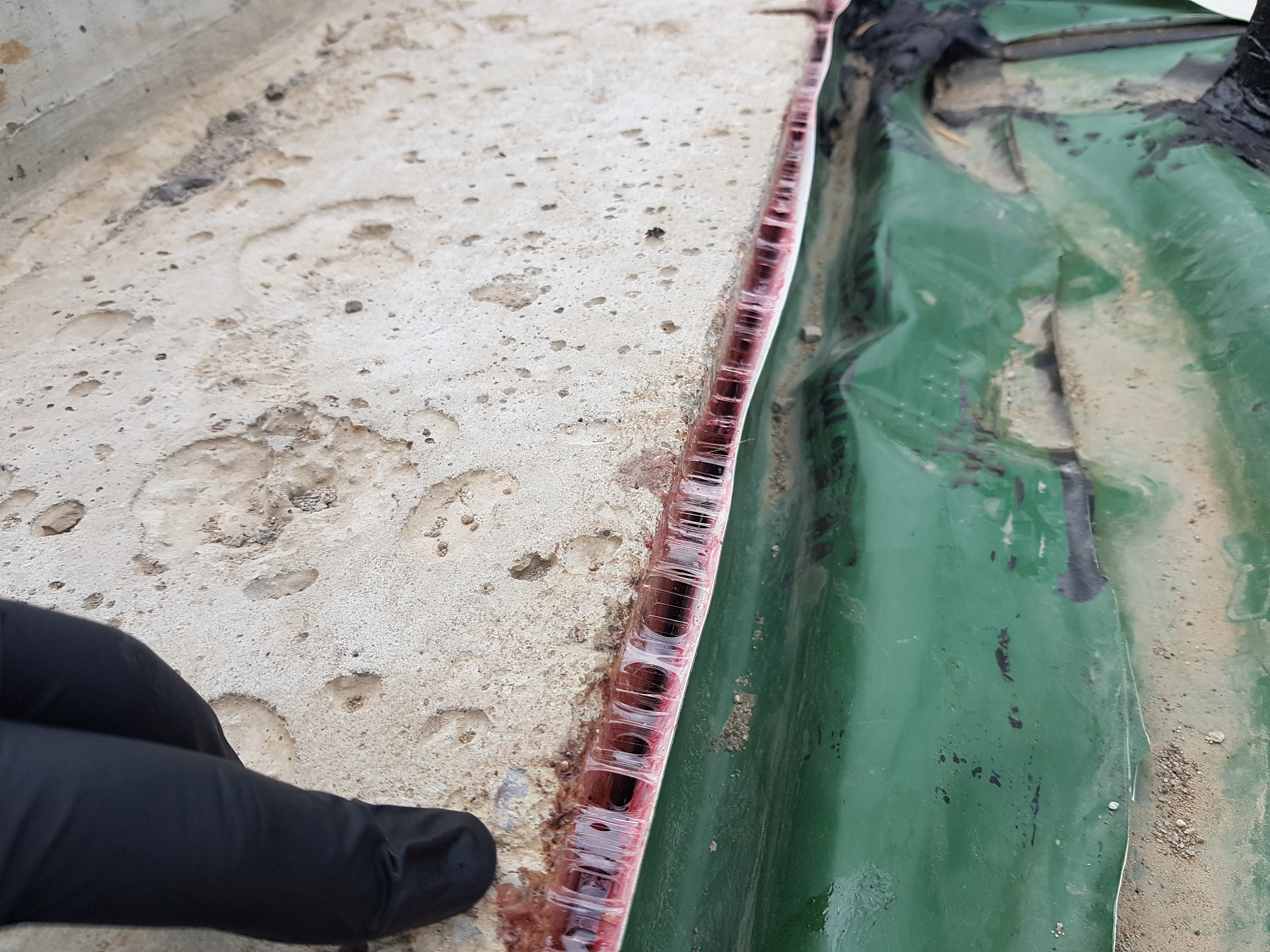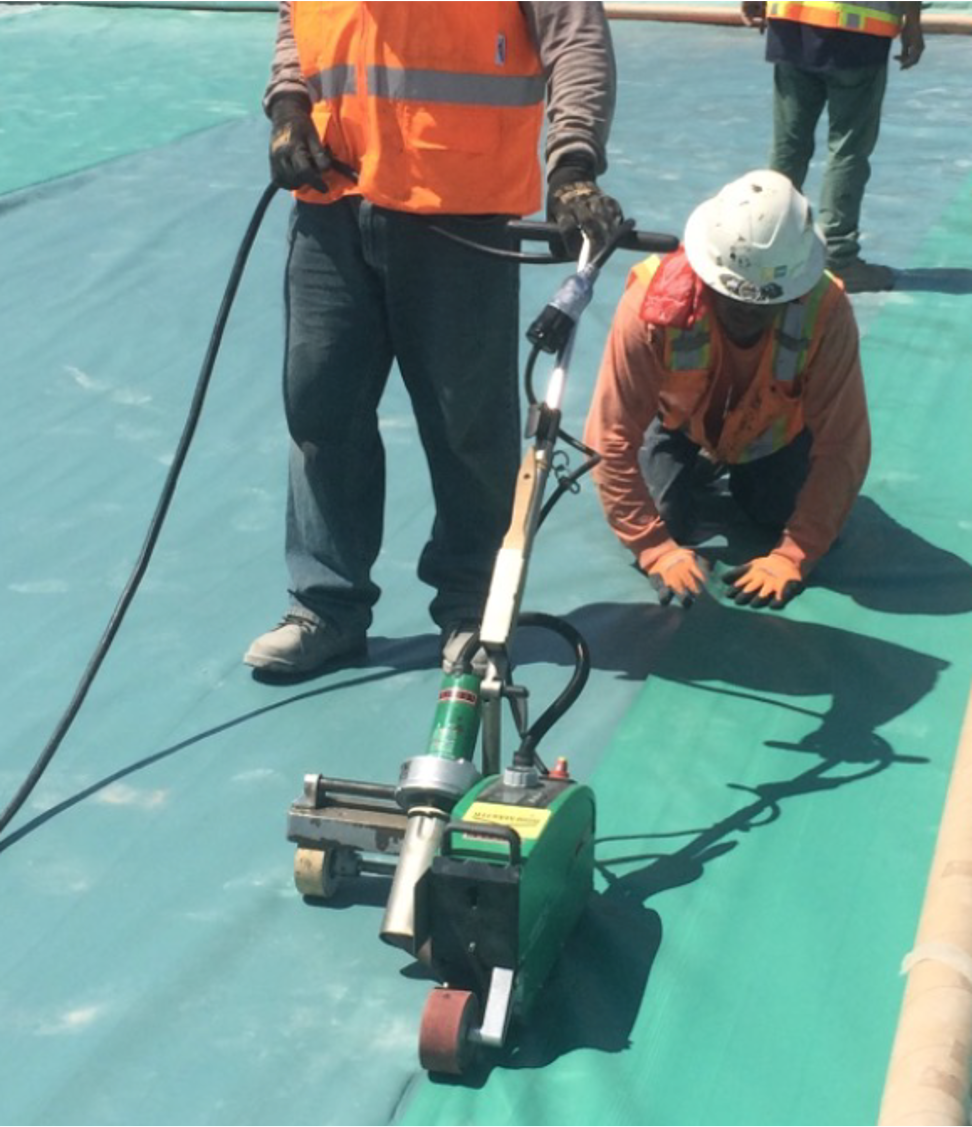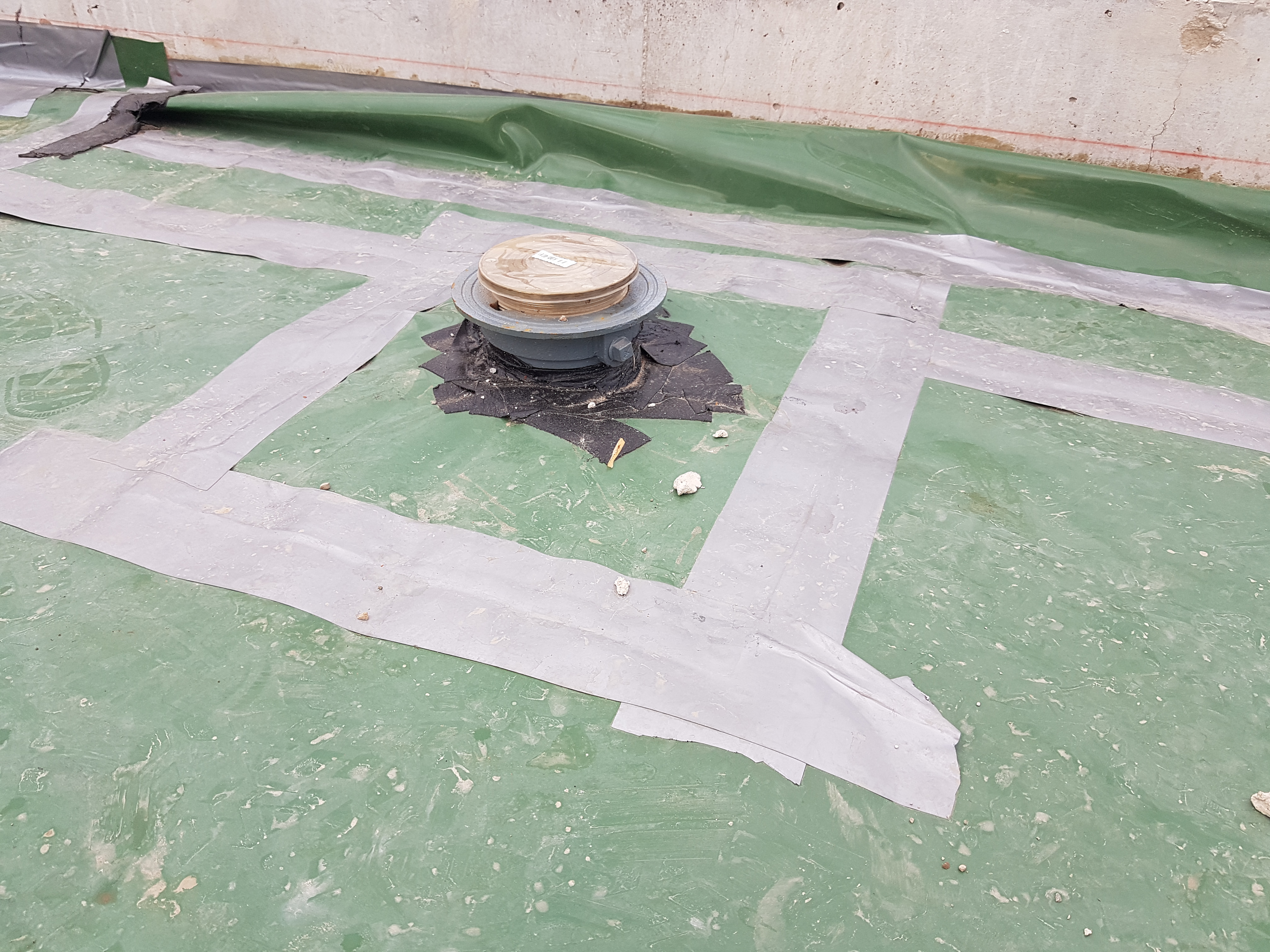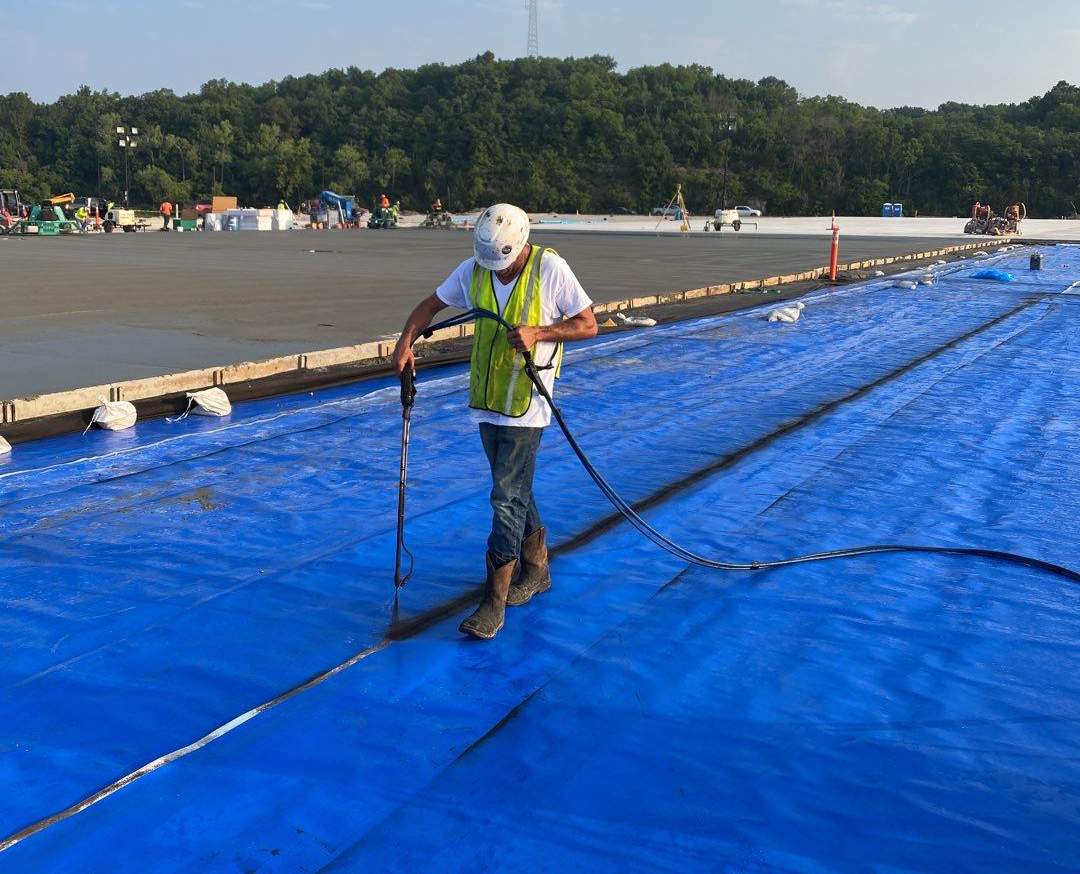
When selecting a barrier or membrane system to mitigate contaminant vapor intrusion, the barrier's construction is critical to system success. While composite barrier systems consisting of multiple layers increase redundancy and likelihood of success, single sheet membranes must rely on seaming procedures to be successful. If the integrity of the seam is compromised, then so is the product's ability to be an effective contaminant vapor intrusion barrier.
Seaming materials is not a new challenge — it has existed for over 50 years, after all — but with environmental screening levels becoming increasingly conservative, the issue has grown in importance. This technical article aims to provide an update on the various seaming options available for single sheet membranes.
There are three options for seaming single sheet membranes used to mitigate vapor intrusion:
- Heat welding (direct fusion) of materials.
- Taped seams or adhesive bonding using partially emulsified tapes, glues or sealants.
- Indirect fusion using spray-applied membranes.
It would be negligent not to mention the role that quality control and quality assurance (QA/QC) play in the installation process. For membranes designed to mitigate vapor intrusion, smoke testing is the most reliable way to verify that the membrane is free from deficiencies visually. For more information on smoke testing, click here.
Heat Welding or Direct Fusion

Heat welding of single sheet membranes will create the longest-lasting seam as the two sheets are fused by localized melting of the material with heat, effectively becoming one uniform membrane. Heat welding requires highly trained and experienced technicians, and they utilize proven QC methods and detailed inspection protocols.
Historically, heat welding is used on sheet membranes that are 30 to 120 mil in thickness, but with advances in equipment, this technology can also be used on thinner mil systems that are between 15 and 30 mils. However, this requires great skill not to damage the material in the seaming process.
Heat welding is often the "go-to" method for environmental containment (landfills), and many engineers will require it if working with plastic sheets such as HDPE, LLDPE, PVC and other liners. It is also the primary method and enshrined with many regulators within the civil and environmental "Geomembrane" industry as the only way to join membranes for environmental and civil works applications.
It is important to note that just because a membrane is heat welded, success is not guaranteed. Equally critical to the integrity of the seam is the type of sheet membrane used.
Most sheet membranes utilize anti-ox packages within their formulations which modify the natural state of the polymers and alter the material properties while enhancing resistance to aging. More importantly, they allow the material to be heated and welded, where unmodified membranes or membranes with recycled content cannot. Heat welding membranes with recycled content should be avoided and most regulators will require “virgin resin” to be specified.
In a building environment, heat welding can offer the best option, but it is often the most expensive, the slowest and the most labor-intensive. Sealing of penetrations is problematic with heat welding, and often, additional sealants are required to make it work. It also presents significant challenges to maintaining construction schedules as the highly-trained nature of the technicians can put them in high demand, limiting available dates for installation.
Taped Seams or Adhesive Bonding

The taping of seams is a common approach in the installation of water vapor barriers. Generally, the perception is that there is little need for skill because, in water vapor barrier applications, the integrity of the seam is not as important. Many a joke has been said about Duct tape and its many uses; however, more careful consideration should be taken when utilizing tape to seam vapor intrusion barriers.
Tapes work by temporarily changing the rules of adhesion by relying on partial emulsification of adhesive contents by chemical agents and modifiers. If the emulsified agents maintain their properties, then the seam integrity will be maintained. However, due to changes in temperature, exposure to moisture or dry air, vapors in the soils or even just simple oxidation, the adhesive emulsion can be impaired or nullified entirely, which may work to change the tape performance over time.
Many tape manufacturers claim that the bond strength increases over time, but care should be taken as this “hardening” process can often cause damage to the membrane being seamed depending on the tape’s chemistry.
When considering using tape at the seams of vapor intrusion barriers, some additional considerations are the VOC content of the tape itself. Many of the compounds used by tape manufacturers are known, but many are instead kept secret and not listed in literature due to patents or intellectual property protection. If VOCs are a concern, you should test the tape for off-gassing before use. Many projects have been put on hold while engineers attempt to trace the source of unknown exceedances, only for it to lead back to the seaming material.
When considering whether to use a tape, it is a question of time. You must consider if the building will outlast the bond, and if it does, it’s best to choose a different seaming method. Some might feel that "out of sight, out of mind" applies here, but when the purpose of the membrane is to prevent water or contaminant ingress, it’s only a matter of time. All mother nature needs is pressure and time to compromise even the best tapes.
Spray-Applied Seams or Indirect Fusion

An ideal option for joining together two types of sheet membranes — if heat welding is not feasible or tape creates more questions than answers — is to use a fluid-applied membrane to seal the seams. There are many different types and installation methods, but essentially, you are "grafting" the membrane onto the seam to create a seamless result. The only caveat is to ensure that the liquid material does not contain any solvents or VOCs.
When utilizing a liquid applied membrane at the seams, the ideal blend between heat welding and tape is achieved. The liquid applied membrane creates an overall more significant seam. The seam is created between the two overlapped seams (generally a 6" overlap) and over the top of the seamed material. Creating a more significant seam between the two sheet materials helps overcome common challenges to heat welding and taped seams, such as inclement weather, substantial changes in temperature and deviations in the substrate.
Most importantly, liquid-applied seams allow for faster repair during the QA/QC process without the threat of further compromising the system.
Get In Touch With an EPRO Expert
For more information on how to seal the seams of your chosen single sheet membrane, talk to an EPRO expert. We can help you pick the right system for your project’s specific requirements.
Meet “Steve Says”
If you enjoy learning about the technicalities behind the complex challenges our industry faces, meet the man behind “Steve Says”: Steve Weiterman, Regional Manager for Ontario and Eastern Canada. With more than 20 years of experience in the field, Steve brings a wealth of knowledge to help make sense of even the most intricate issues we face on job sites today.
